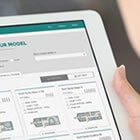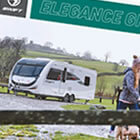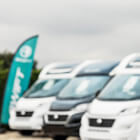First time buyer?
If you’re new to touring, getting started with your first caravan or motorhome can feel a little daunting. Here you’ll find the information and tips to makes things simple, helping you get to grips with everything from choosing your first vehicle to getting out on the road, with handy jargon-busting tips along the way.
 Find a dealer
Find a dealer
Ready to find a Swift caravan dealer? We'll help find the nearest dealers to you. Select your model
Select your model
Choose your product type and select a model to match your requirements. Guides, articles & features
Guides, articles & features
We aim to provide you with straightforward, useful information to help you with your touring caravan, campervan or motorhome. Finance
Finance
Discover funding options that get you closer to your dream of owning one of our awarding winning leisure products. Brochures
Brochures
View and download our caravan & motorhome brochures for details on features, layouts, options and SMART construction. Dealer specials
Dealer specials
Check out our retailer special ranges that offer you even more choice and value for money. Insurance
Insurance
Your caravan or motorhome is all about relaxing and enjoying quality, carefree time together - so it’s time to get peace of mind with Supersure. International dealers
International dealers
Buying a Swift leisure vehicle outside of the UK? We have a number of relationships with appointed Swift dealers internationally that sell a variety of our caravans and motorhomes. Reviews
Reviews
Check out what the nations leading publications are saying about our exciting ranges of caravans and motorhomes. Videos
Videos
Watch all our videos on caravans, motorhomes, holiday homes and lodges at our dedicated YouTube channel.